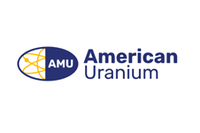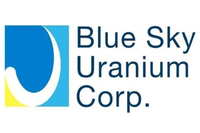Cantor Fitzgerald’s Rob Chang provides insight into the uranium space, touching on his firm’s uranium outlook and stock picks.
See our most recent update on Cantor Fitzgerald’s uranium outlook and stock picks here.
Cantor Fitzgerald’s Quarterly Commodity Outlook, released Tuesday, focuses largely on the firm’s uranium outlook and reactor restarts in Japan. It also includes a rundown of which uranium companies are on the firm’s radar and what they have been up to lately.
In Q2, the uranium spot price came in under Cantor’s estimate of US$40 per pound, hitting US$36.79; according to the firm, the shortfall was mainly due to utilities refraining from both signing contracts and buying.
Cantor Fitzgerald Senior Analyst Rob Chang explained that utilities haven’t been signing contracts because low prices have rewarded them for holding out. That said, he believes buyers are aware that prices are going to get a lot higher in the future.
“The buyers themselves know the prices are going to be a lot higher and they fully see that in the future they are going to pay a lot more — double, maybe even triple. But it is a bureaucracy, they need to get approvals from others, and it’s difficult to justify to the senior board to lock in a contract at US$45, US$50, US$60 when you can just as easily walk into the market right now and buy it for US$36. And they have been right so far,” Chang explained, adding that the premise that ample inventory is readily available has also kept buying at bay.
Still, Chang warned that there probably won’t be enough to go around, especially with Russia and China holding onto a lot of material that many think is mobile, but likely isn’t.
Uranium outlook
Cantor’s uranium spot price predictions for the next three years remain the same: US$50 in 2016, US$60 in 2017 and US$70 in 2018.
According to Chang, his firm’s confidence is rooted in uncovered requirements. Essentially, utilities will eventually have to start buying as reactors cannot operate without uranium. “At some point, someone is going to have to jump in and buy and others will do the same — the spot market is so thin that it will show. Just like last year, when a few buyers came in it went from US$28 to the US$40 range really quickly,” he said.
Japan reactor restarts
As always, reactor restarts in Japan were a topic of discussion, especially now that the first two reactors are expected to come online in less than two weeks. Chang said in his report that restarts will be the type of “front page” news that will spark investor interest in the space as well as dispel the still-existing notion that Japan won’t return to nuclear energy.
At the same time, while the restarts will be positive from a market sentiment perspective, several reactors will have to restart in order to have any big impact on the supply and demand equation. Cantor’s expectations for restarts remain the same, with two expected in 2015, another five in 2016, seven in 2017 and a total of 36 reactors running in Japan by 2020.
Company picks
While Cantor Fitzgerald likes the uranium space as a whole, it also covers a number of uranium companies, most of which it’s assigned “buy” recommendations. Azarga Uranium (TSX:AZZ) is one company that has just been added to the firm’s roster, with the report highlighting the near-term production potential at the company’s Dewey Burdock project, a high-grade ISR project located in the US.
Naturally, Cameco (TSX:CCO,NYSE:CCJ) is on the list, especially considering the fact that the company recently announced that will continue to meet production expectations despite suspensions due to wildfires.
In terms of uranium companies hitting milestones on projects, the report highlights Energy Fuels (TSX:EFR,NYSEMKT:UUUU), which not long ago received approval to make major revisions to the mining permit at its Sheep Mountain project and was also granted final approvals for its Hank Unit ISR project in Wyoming.
Other honorable mentions in the report are Kivalliq Energy (TSXV:KIV), which began drilling at its Angilak property in Nunavut earlier this month; Denison Mines (TSX:DML) and Fission Uranium (TSX:FCU), which plan to merge and become Denison Energy; Uranium Energy (NYSEMKT:UEC) and finally Ur-Energy (TSX:URE).
Overall, Cantor believes there is “tremendous value in the uranium space especially in light of the reactor restart catalyst and the compelling supply and demand backdrop that is underpinned by the uncovered requirements of utilities.”
Securities Disclosure: I, Kristen Moran, hold no direct investment interest in any company mentioned in this article.
Related reading:
Uranium Future Outlook: What do Restarts in Japan Mean for Uranium Juniors?
Uranium Price Flat as Market Watched Japan and China





